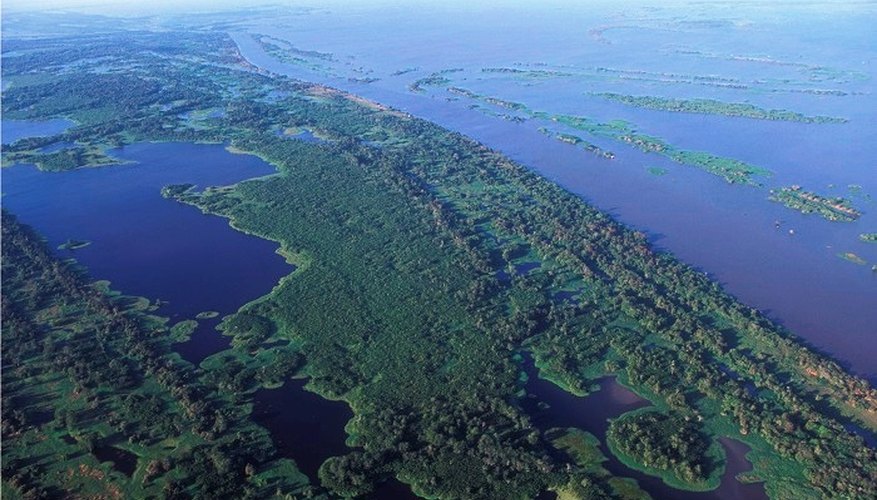Rivers are nature's supply of fresh water. Most originate at the top of mountains and flow down to join seas, oceans and lakes. Rivers begin their journeys as streams and springs. Some become large rivers flowing between river banks; the large ones are called rivers, the smaller ones streams, brooks and rivulets. Rivers form part of what is termed a hydrological cycle. The water in a river is generally collected from surface runoff, springs, groundwater recharge, ice and snow.
The Amazon, South America
The Amazon River has been called the greatest in the world. Where the river opens at its estuary, it is an amazing 325 km (200 miles) wide. In the dry season, its widest point is about 11 km (7 miles) wide. It carries the largest volume of freshwater, about 20 per cent of the total discharge into oceans. It is one of the longest rivers in the world, measuring about 6,500 km (4,040 miles). In dry seasons the Amazon covers an area of 11,000 square km (6835 square miles) of land; in wet seasons it covers roughly 35,000 square km (21,750 square miles) of land. The mouth of the Amazon at the point where it meets the sea is so large that ocean-going ships have actually navigated its waters to travel inland.
- The Amazon River has been called the greatest in the world.
- It is one of the longest rivers in the world, measuring about 6,500 km (4,040 miles).
The Congo, Africa
The Congo River's width expands to around 16 km (10 miles) at the widest point along its course. The river forms the major part of the border between the Republic of Congo and Zaire. The Congo River is divided into three sections: the Upper Congo, the Middle Congo and the Lower Congo. The Congo River is the second-largest river in the world in terms of volume discharged, after the Amazon River, and it is 4,700 km (2920 miles) long.
- The Congo River's width expands to around 16 km (10 miles) at the widest point along its course.
The Yangtze, China
The Yangtze River's width varies at different points along its course, from 30 metres at its narrowest point to 650 metres (710 yards) at its widest point. In some places the width ranges from 200 to 300 metres, in other 300 to 500 metres, and still others 500 to 650 metres. The Yangtze River is China's largest river, and it is considered the third-largest river in the world. The river runs a more than 6,000 km long course. It plays an important role in the country's agricultural and mineral industries. The river is also a major water transport artery for China and has more than 700 tributaries.
- The Yangtze River's width varies at different points along its course, from 30 metres at its narrowest point to 650 metres (710 yards) at its widest point.
The Volga, Russia
The Volga River is the longest river in Europe. It forms Western Russia's principal waterway. Rising in the Valdai Hills, it flows through more than 3,500 km to empty into the Caspian Sea. The width of the Volga River varies at different points along the route -- at times it is 65 km wide. The river is important to the Russian people and is fondly referred to as Mother Volga.
- The Volga River is the longest river in Europe.
- The width of the Volga River varies at different points along the route -- at times it is 65 km wide.
